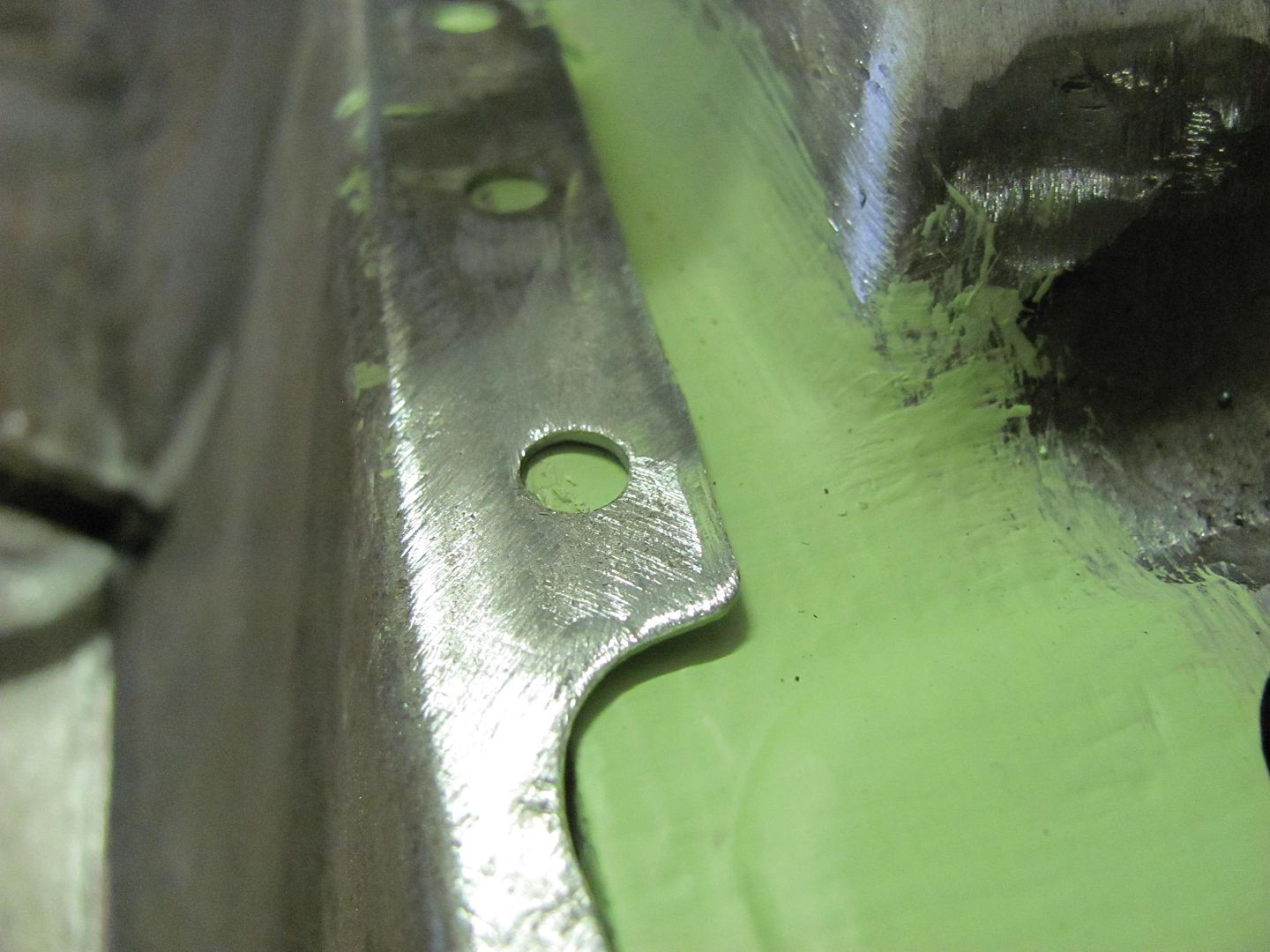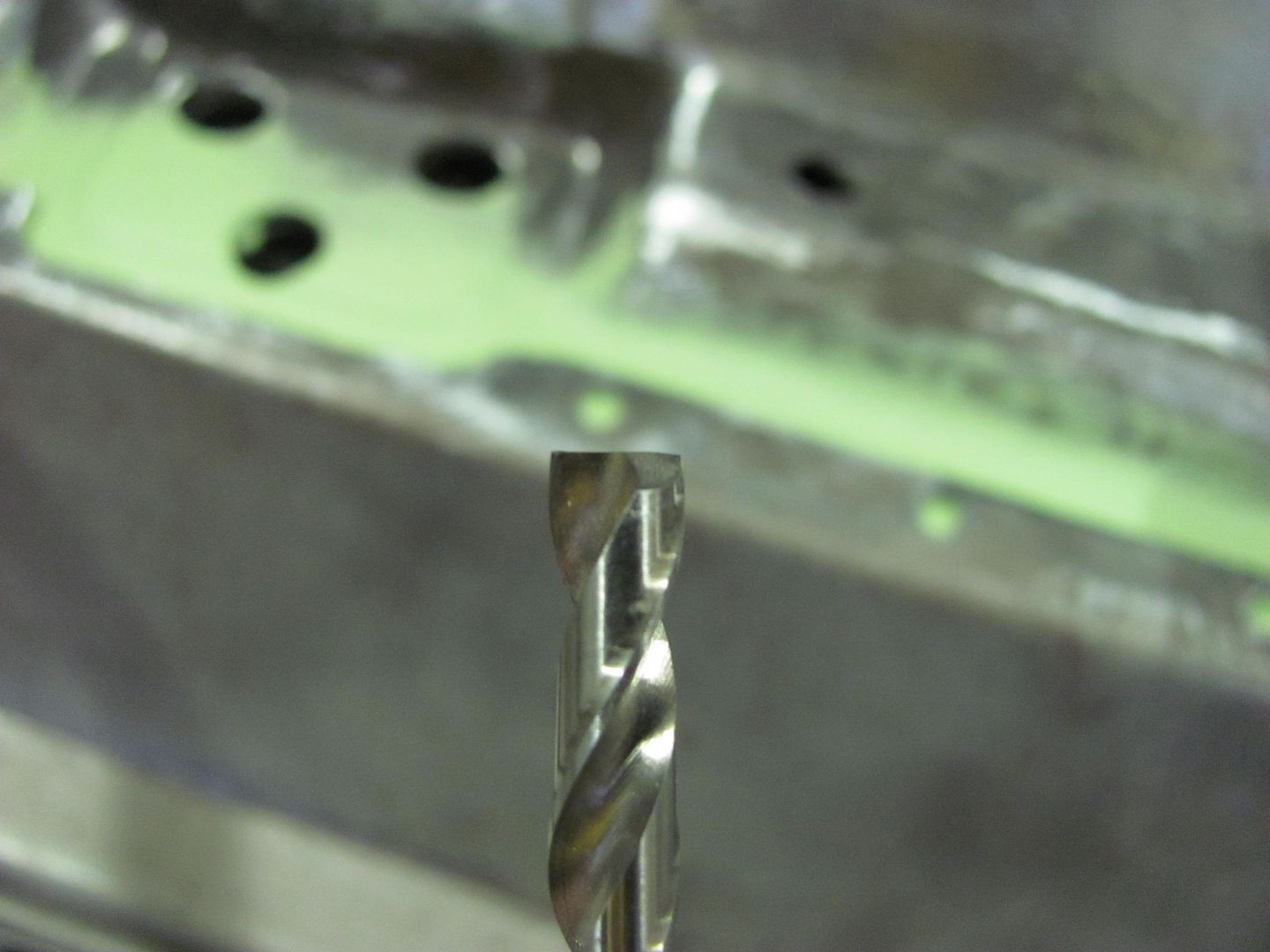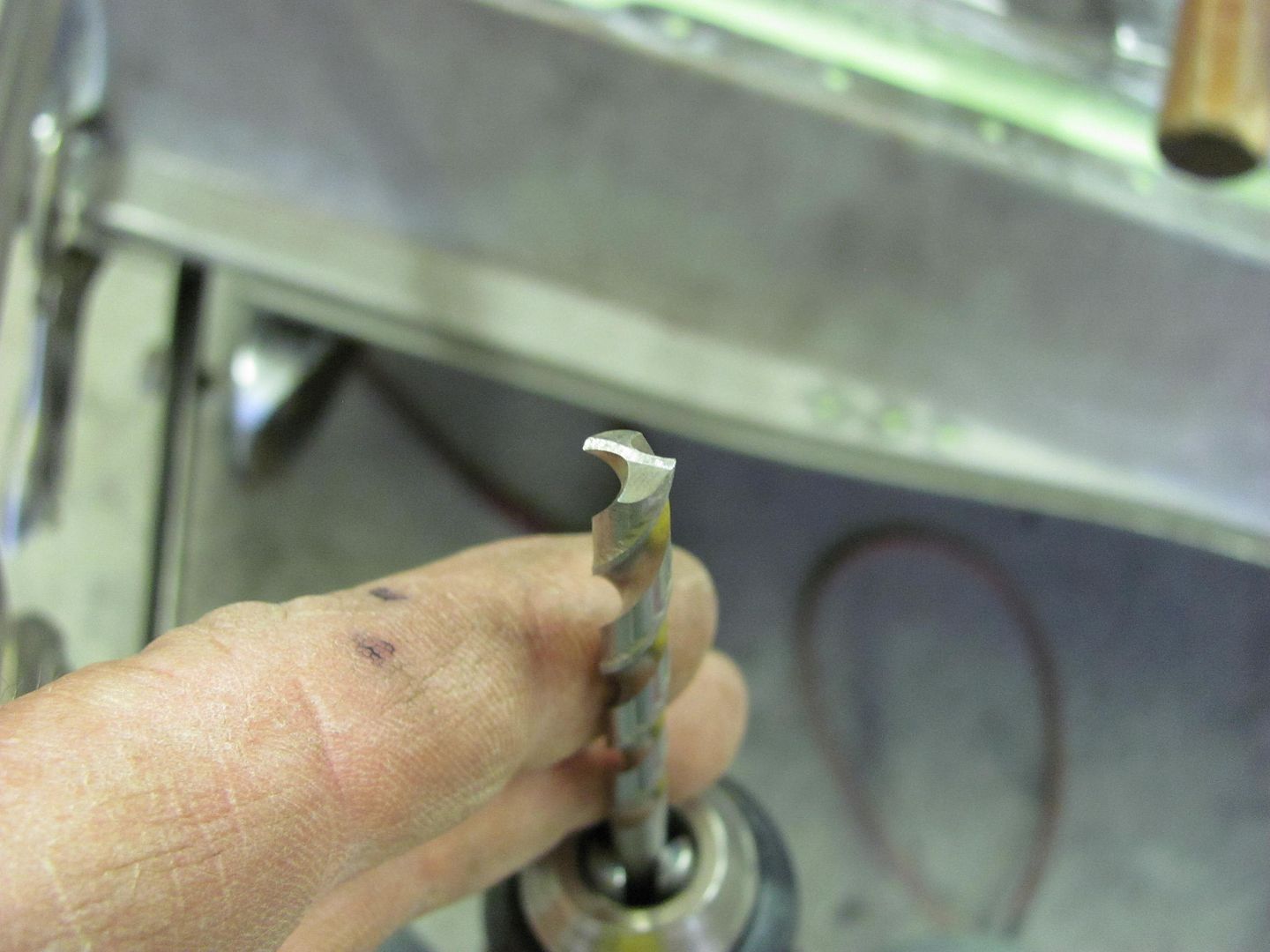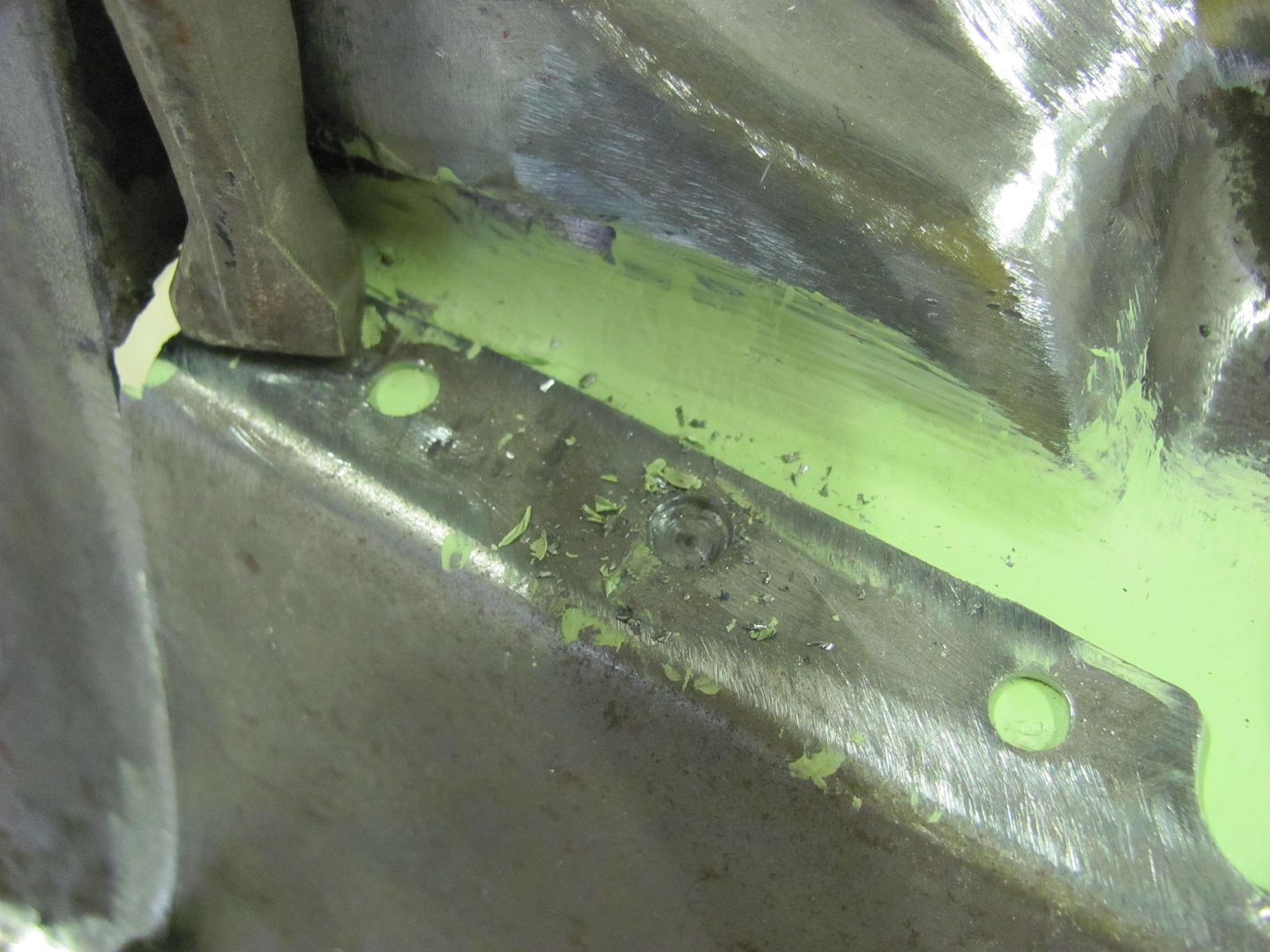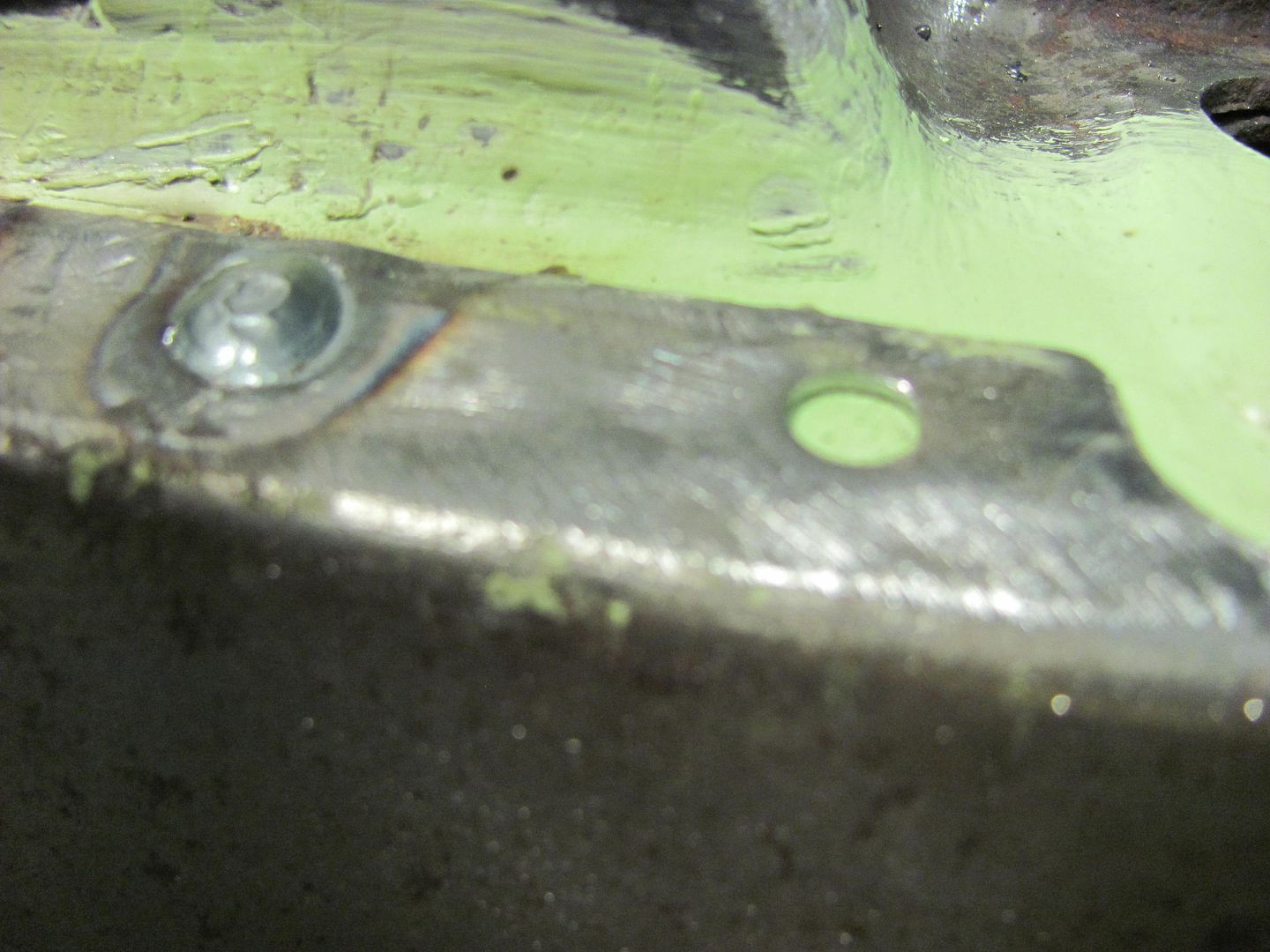I typically follow method similar to what Chris mentioned above when assembling adjacent panels. I'll just use epoxy between the two, as shown here painted on the rear tailgate opening, and also on the underside of the tailpan. This provides rust protection where in many cases the factory process does not add any paint until after assembly. In cars like this 55, in many cases the inner voids such as in the rockers or floor crossmembers never receive any paint finish inside, making them prone to moisture and rust issues.
Where this epoxy will not allow welding, you will need to clean the paint off the adjacent panel within the drilled plug weld hole.
Which is what brought about the need for this tool, made from the same size drill bit I used for plug weld holes. It gets flattened and back-faced to resemble an end mill cutter.
This shows how it works, cleans the paint from the metal surface, but having a flat face on the cutter, it doesn't try to drill through the metal as a regular drill bit would.
welded......
For application, I'll either spray inside my paint booth or for a small application like you see here, I'll mix up some epoxy and brush it on. (note brush strokes in first pic above) The application process won't matter much as any exposed epoxy will be sanded and re-applied later, but now that we have some epoxy between the two panels, there is better rust protection regardless of how it got there. Once welding is complete, mixing up additional epoxy and allowing it to run between the two adjacent panels only helps to seal the joint even more. For door skin installations, I'll epoxy both surfaces separately, assemble, and then pour epoxy inside the door and roll it around to seal out seam where the panels meet. Anything we can do to seal out the moisture will only serve to help these cars last even better on their second lease on life..



